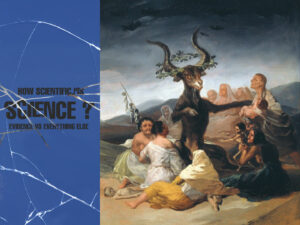Humour, or “tickling of the mind” as Darwin called it, is subjective. Some of us find Donald Trump’s hair lol-worthy, while others lose it when they see someone fall over.
And we all have certain words that make us laugh.
Tomas Engelthaler, a doctorial researcher from University of Warwick in the UK, decided to find out which words were funniest of all.
“My supervisor walked into the office one day and asked me, ‘Do you think porridge or oatmeal is funnier?’,” Tomas says.
“He was talking to his kids over breakfast, and they couldn’t stop laughing at the word porridge. He insisted porridge was funnier, whereas I thought oatmeal took the crown.
“This got us thinking why single words would be funny at all. We decided to make a database of funniness to investigate.”
Moist panda and booty bebop
The study collected 4997 common English words from 821 online participants. Each participant rated 211 words on a scale from 1 (funny as a funeral) to 5 (thigh-slappingly hilarious).
These common words included deathbed, moisture, walnut and panda. They’re not words we commonly associate with humour, unless presented in a certain context. Rude words were also represented, with ass, tit, turd and twit making the list.
‘Booty’ came in at number one, which was a surprise to Tomas.

“We thought the funniest words would be the most positive ones such as sunshine, happiness and excitement,” he says. “This was not the case at all. The funniest words, like booty, are not particularly positive.
“We also found that the funniest jokes don’t necessarily contain the funniest words at all. “This goes to show that the humour of a joke is completely different to the humour of a single word.”
The sexes were studied separately to see if men and women both have a similar funny bone.
Turns out they don’t.
Men chuckled over ‘bondage’ (make of that what you will), while women had a laugh over ‘giggle’.

The history of humour
“People have been interested in humour for thousands of years,” Tomas says. “It goes back to the philosophers of ancient Greece, who thought humour was a sophisticated way of training our minds.”
Today’s thinkers are more interested in finding out why we find particular words, events and images humorous.
Tomas says his study builds on the benign violation theory.
“This theory suggests people think stuff is funny when it violates the norms (like when you see a pink elephant walking down the street) but also if the situation is benign or harmless enough (a pink elephant running at you would be less of a joke).”
Making sense of it all
The research allowed Tomas to established a dataset of humour norms, which he says will help to understand the motivation behind sharing certain words, text and comments on the web.
“Learning that ‘booty’ is funnier than ‘porridge’ is a fun result, but it’s not the main contribution of our paper,” he says.
“People these days are producing unbelievable amounts of text online. These text-driven interactions are at the core of our culture.
“Taking these patterns apart is a collective effort of many researchers. It is my hope that our dataset is one piece of a big puzzle, helping us understand what goes on in our minds when we produce or see text.”
If you’re keen, you can check out the dataset here.









